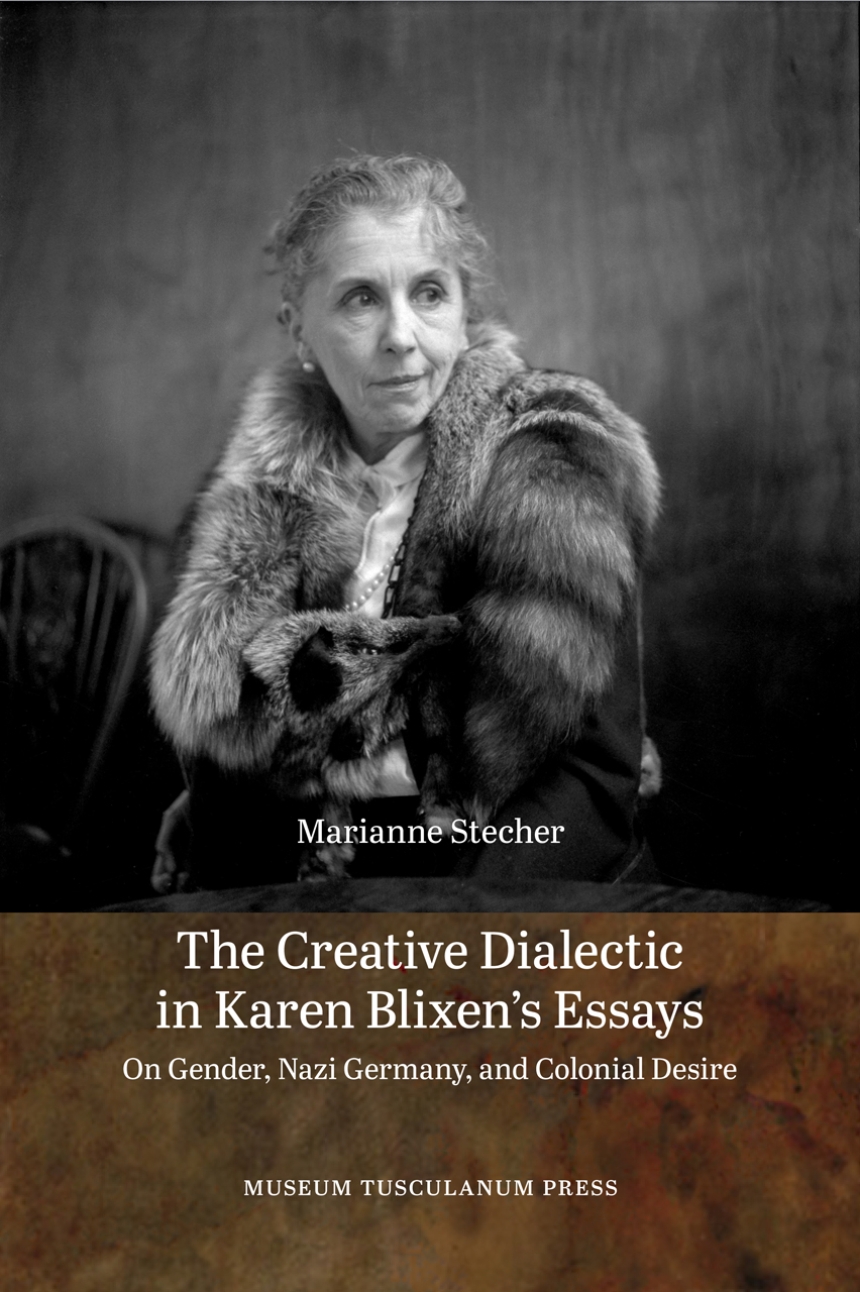The Creative Dialectic in Karen Blixen’s Essays
On Gender, Nazi Germany, and Colonial Desire
9788763540612
Distributed for Museum Tusculanum Press
The Creative Dialectic in Karen Blixen’s Essays
On Gender, Nazi Germany, and Colonial Desire
Best known for Out of Africa and Babette’s Feast, Karen Blixen—often writing under the name Isak Dinesen—was an iconic figure in Scandinavia and the Anglo-American world, celebrated as a literary star and a pundit in newspapers, radio, and lecture halls. Many of her topical pieces would later be published as essays, and in this book Marianne Stecher offers the first critical examination of them, exploring Blixen’s sagacious reflections on some of the twentieth century’s greatest challenges.
Stecher uncovers a “creative dialectic” in Blixen’s work, an interplay of complementary opposites that Blixen saw as fundamental to human life and artistic creativity. Whether exploring questions of gender and the status of the feminist movement in the middle of the twentieth century, the reign of National Socialism in Hitler’s Germany, or colonial race relations under British rule in East Africa, Blixen drew on a dialectical method to offer insightful, witty, and surprisingly progressive observations.
Including the first English translation of Blixen’s essay “Blacks and Whites in Africa,” this book is an essential companion to the works of this original thinker and writer.
300 pages | 6 1/2 x 9 1/2 | © 2014
Literature and Literary Criticism: General Criticism and Critical Theory
Reviews
Table of Contents
Acknowledgements
Introduction
Part One
On Feminism and Womanliness in “Oration at a Bonfire” and “The Blank Page”
Blixen’s Feminism and Feminist Criticism
Reading “Oration at a Bonfire”—Rethinking Feminism
The Bonfire Oration in Dialogue with Ortega y Gasset
Feminine Attire—Essence and Construction
Blixen’s Entreaty to Postwar Feminists
Women and History—From Gender to Existence
Womanly Essence and “The Blank Page”
Part Two
On Nazism as a “One-Sexed Community” in “Letters from a Land at War”
A Soldier’s Daughter and the Warrier Ethos
Hitler’s Magnetism and Invitations to Germany
Investigating the Original Typescripts
Blixen Criticism, the Wivel Debate, and the Heretics
“The Foreword”—The Narrative Strategy of Neutrality
“An Old Hero in Bremen”—The Chivalrous Enemy
“Great Undertakings in Berlin”—The New German Religion
“Strength and Joy”—The Gospel of the Will to Power
“The Stage”—Art or Propaganda
Postwar Reflections—Two Kinds of Courage
Part Three
On Colonial Desire in “Blacks and Whites in Africa,” Out of Africa, and Shadows on the Grass
Venerable Artifacts of the Colonial Past
Ambivalence and Mimicry in Out of Africa and “Farah”
Colonial Denmark, Postcolonial Criticism, and Blixen’s Legacy
“Blacks and Whites in Africa”—Colonial Power as Illusion
“Kitosch’s Story”—White Prestige
“Farah”—Affectionate Paternalism in the Master/Slave Dialectic
“Barua a Soldani”—Desire, Gift, and Sacrifice
Conclusion
Appendix: Karen Blixen, “Blacks and Whites in Africa” (1938)
Bibliography
Index
Introduction
Part One
On Feminism and Womanliness in “Oration at a Bonfire” and “The Blank Page”
Blixen’s Feminism and Feminist Criticism
Reading “Oration at a Bonfire”—Rethinking Feminism
The Bonfire Oration in Dialogue with Ortega y Gasset
Feminine Attire—Essence and Construction
Blixen’s Entreaty to Postwar Feminists
Women and History—From Gender to Existence
Womanly Essence and “The Blank Page”
Part Two
On Nazism as a “One-Sexed Community” in “Letters from a Land at War”
A Soldier’s Daughter and the Warrier Ethos
Hitler’s Magnetism and Invitations to Germany
Investigating the Original Typescripts
Blixen Criticism, the Wivel Debate, and the Heretics
“The Foreword”—The Narrative Strategy of Neutrality
“An Old Hero in Bremen”—The Chivalrous Enemy
“Great Undertakings in Berlin”—The New German Religion
“Strength and Joy”—The Gospel of the Will to Power
“The Stage”—Art or Propaganda
Postwar Reflections—Two Kinds of Courage
Part Three
On Colonial Desire in “Blacks and Whites in Africa,” Out of Africa, and Shadows on the Grass
Venerable Artifacts of the Colonial Past
Ambivalence and Mimicry in Out of Africa and “Farah”
Colonial Denmark, Postcolonial Criticism, and Blixen’s Legacy
“Blacks and Whites in Africa”—Colonial Power as Illusion
“Kitosch’s Story”—White Prestige
“Farah”—Affectionate Paternalism in the Master/Slave Dialectic
“Barua a Soldani”—Desire, Gift, and Sacrifice
Conclusion
Appendix: Karen Blixen, “Blacks and Whites in Africa” (1938)
Bibliography
Index

